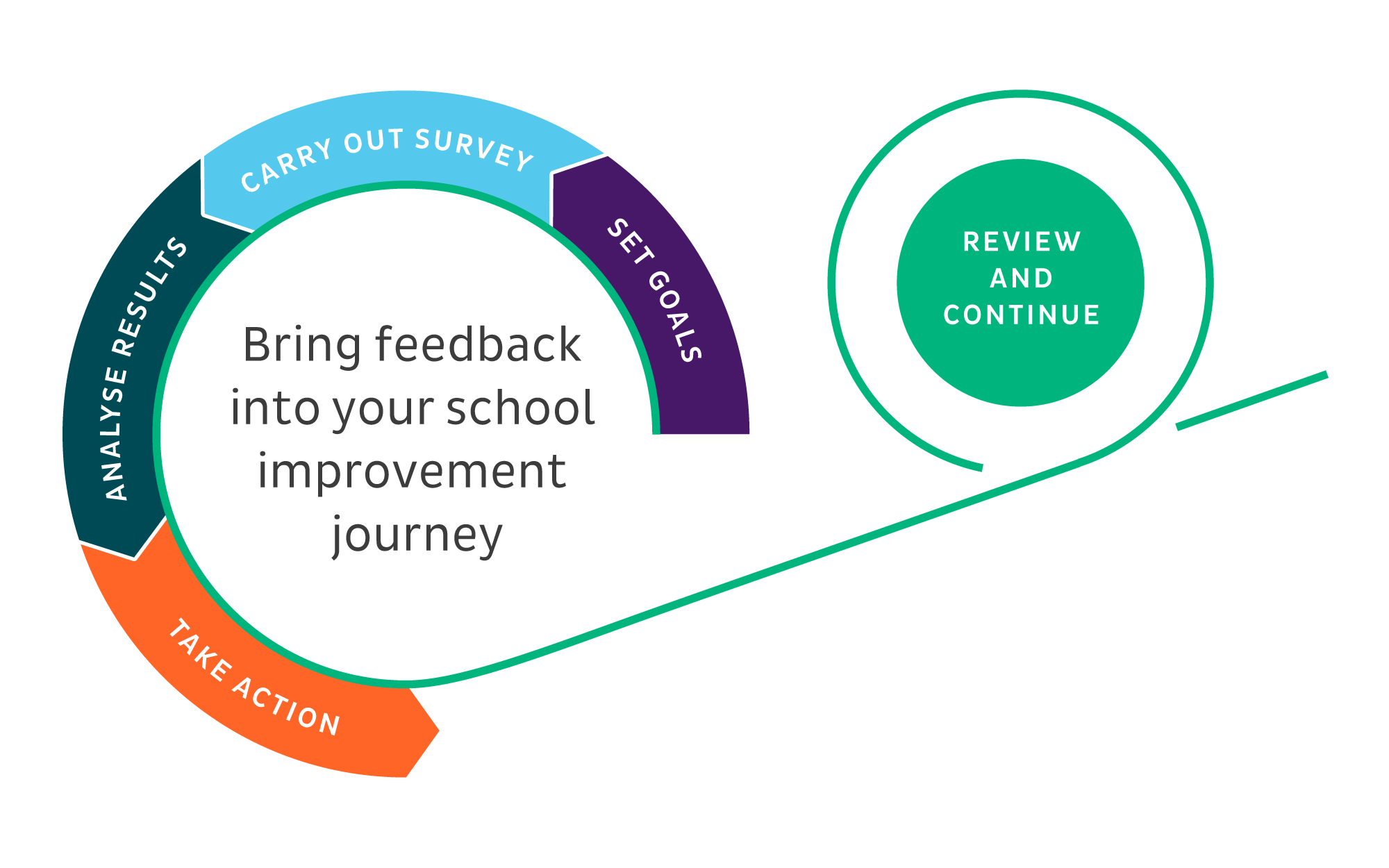Windsor Academy Trust
Windsor Academy Trust’s methodical approach to handling survey feedback has led to organisational improvement, increased engagement and empowerment of stakeholders, and more effective and targeted problem-solving. Although they are still in the beginning stages of their strategic feedback journey, these first impressions are setting the stage for impactful work to come.
Here, they share their simple yet effective approach to taking action after completing an Edurio survey. This demonstrates that the next steps do not have to be complicated or overwhelming; rather, getting the data into the hands of those working in your organisation is key to problem-solving.
Meet Windsor Academy Trust
The Trust has grown significantly, expanding from nine to 15 schools (eight secondary and seven primary) in one academic year. With this growth, staying connected to staff, pupils and parents has been crucial. Claire Gething, the trust’s Director of Communications, describes this connectedness as their big WHY – the reason they use stakeholder feedback surveys to stay in tune with their community.
In this spotlight:
- A top-down approach
- Building capacity
- Keeping the process simple
- Pupil involvement
- Reflections for success
Key Takeaways from Working with Survey Results
Claire Gething, Director of Communications, shares:
“One of our biggest learnings has been around capacity. The survey is simple to administer, but the work begins when you’ve got the results. Ensuring a simple process, a clear timeline and built-in capacity within both the central team and in schools is crucial.”
Top-Down Approach with Reflection Questions
By using a similar structure for all feedback meetings, the takeaways from each were easy to review and summarise for further work. Claire and her team kept it as simple as possible, considering the workload of the people involved.
- Reflection questions for looking at results:
- What are we pleased with?
- What can’t we live with?
- Executive Team Review:
- Used a jam board to observe results and post reflections.
- Headteachers’ Review:
- Each headteacher received their school’s report and the trust-wide results;
- Agreed on what they were pleased with and what they couldn’t live with.
Building Capacity
To support headteachers with their capacity in school, Claire stepped in to help conduct the feedback sessions with staff. The goal was to be as transparent as possible and to get staff to share, in particular, what they were pleased with and what they couldn’t live with when looking at the results.
- Ran feedback sessions with staff using the two reflective questions above;
- Summarised staff reflections and identified top 3-5 areas for further exploration in focus groups;
- Conducted focus groups with 10% of staff to delve deeper into issues.
Keeping the Process Simple
Keeping the process simple means it was much easier to ask for 30 minutes of staff time and easier to schedule a short session, but still get actionable results to take forward.
- Feedback sessions were 30 minutes:
- 10 minutes for individual reflection looking at the survey results;
- 10 minutes for discussion on what they are pleased with;
- 10 minutes for discussion on what they can’t live with.
- Summarise reflections and categorise priorities for action plans.
Pupil Involvement
A similar process has taken place with pupil survey results, getting pupils to work together on analysing and problem-solving around their key issues. This emphasised the point that working for solutions was not just in the interest of the adults but that pupils themselves could be agents of change in their schools.
- The Student Senate reviewed survey results and discussed reflection questions;
- Organised focus groups with 10% of pupils, co-led by staff and student leaders.
Reflections for Success
- Plan for Capacity: Ensure there is capacity to follow up on survey work. Build in time in CPL or staff briefings to hold discussions.
- Clear Timeline: Attach a timeline to your survey follow-up process.
- Support and Templates: The central team is critical in supporting schools, as facilitators and support where capacity is needed. Provide templates for focus groups to ensure consistent feedback collection.
- Vertical and Horizontal Processes: Ensure all levels of stakeholders are invited to interact with the results (Vertical) and identify common themes across schools for a trust-wide response (Horizontal).
For More Information
Explore our Stakeholder Feedback Hub for the ins and outs of getting from results to action as effectively as possible. The hub includes concrete steps to work through and downloadable materials to help you make the most out of the process.
If you are looking for more support on school improvement, the CST, along with ImpactEd, has created a new hub to share good practice case studies.
This approach speaks to other frameworks that support effective implementation, such as the updated EEF implementation framework. Keystones of effective behaviour include Engage-Unite-Reflect to get people on the same page and truly engage with the work to be done.
Visit Stakeholder Feedback Hub